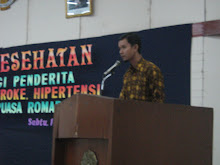Save My Heart

Observer, Handheld ECG Monitor, MD100A is designed for home use with the purpose of health care, and is suitable for users who may suffer from cardiovascular disease, such as hypertension, diabetes, coronary heart disease, etc., or those who have the symptoms of heart-throb, stuffy chest. It can be used to check their heart conditions regularly, and the stored ECG records can be used as a reference for clinical ECG examination.Handheld ECG Monitor DW-H109 Key Features:Small, portable and easy to operateCompletely cable and electrode freeFast measurement in just 30 seconds100 records of ECG Strips, each record with 30-second ECG waveform and analysis resultMeasurement of one channel ECG anytime, anywhere you likeDisplay of ECG waveform, heart rate, analysis results and battery status on the backlit LCDAuto power-off while no key is pressed in 60 secondsAuto-evaluation based on detected heart data4 batteries can take at least 500 times measurementData Review freely




